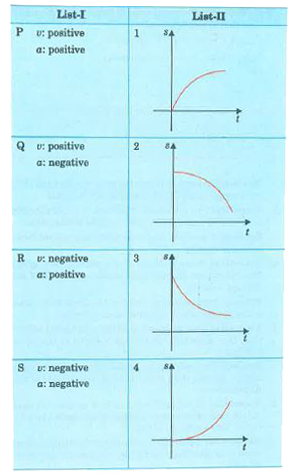A
B
C
D
Text Solution
Verified by Experts
The correct Answer is:
Topper's Solved these Questions
MOTION IN A STRAIGHT LINE
MODERN PUBLICATION|Exercise COMPETITION FILE (MATRIX MATCH TYPE QUESTIONS )|1 VideosMOTION IN A STRAIGHT LINE
MODERN PUBLICATION|Exercise COMPETITION FILE (INTEGER TYPE QUESTIONS )|9 VideosMOTION IN A STRAIGHT LINE
MODERN PUBLICATION|Exercise COMPETITION FILE (ASSERTION REASON)|9 VideosMOTION IN A PLANE
MODERN PUBLICATION|Exercise Chapter Practice Test|15 VideosOSCILLATIONS
MODERN PUBLICATION|Exercise Practice Test (For Board Examination)|12 Videos
Similar Questions
Explore conceptually related problems
Knowledge Check
A
B
C
D
A
B
C
D
A
B
C
D
